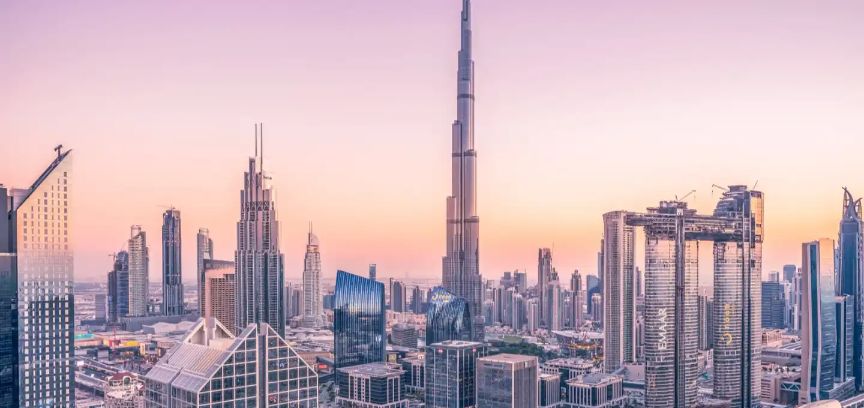Reaching New Heights: The World's Tallest Skyscrapers in Real Estate
3 min read
19 Sep 2024
Skyscrapers are not merely architectural marvels; they represent the aspirations and achievements of human ingenuity and engineering prowess. As population density in urban areas continues to grow, so does the demand for taller and more innovative buildings. In the realm of real estate, these soaring giants stand as symbols of progress and modernity. Let's take a virtual tour of some of the world's tallest skyscrapers and explore their impact on the real estate landscape.
Burj Khalifa, Dubai, UAE
Standing at a staggering 828 meters (2,717 feet), the Burj Khalifa is the world's tallest skyscraper. Completed in 2010, this iconic tower has transformed Dubai's skyline and elevated the city to international prominence. Beyond its architectural marvel, the Burj Khalifa has become a symbol of luxury real estate. Its apartments offer breathtaking views of the city, and the tower houses prestigious corporate offices, world-class restaurants, and high-end retail spaces. The Burj Khalifa exemplifies the fusion of luxury living and commercial spaces, setting the standard for mixed-use real estate development.

Shanghai Tower, Shanghai, China
The Shanghai Tower, standing at 632 meters (2,073 feet), is China's tallest skyscraper and the second tallest in the world. Completed in 2015, this twisting glass tower boasts a unique design that enhances energy efficiency and stability. In the realm of real estate, the Shanghai Tower represents the future of sustainable living and working spaces. It houses luxury hotels, corporate offices, high-end shopping, and upscale apartments, reflecting the integration of green technology and urban living.
Abraj Al Bait Clock Tower, Mecca, Saudi Arabia
The Abraj Al Bait Clock Tower is a prominent feature of the Mecca skyline, reaching a height of 601 meters (1,972 feet). Completed in 2012, this tower serves as a focal point for religious tourism and pilgrimage in Saudi Arabia. Real estate around the Abraj Al Bait Clock Tower is highly sought after, with luxury hotels and residential units catering to the millions of visitors who flock to Mecca each year. This skyscraper demonstrates the unique intersection of religious tourism and real estate development.
Ping An Finance Center, Shenzhen, China
The Ping An Finance Center stands at 599 meters (1,965 feet) and is one of China's tallest skyscrapers. Completed in 2017, this tower combines commercial and residential spaces with a futuristic twist. Its real estate offerings include premium office spaces, luxury apartments, and a cutting-edge hotel. The Ping An Finance Center reflects the evolution of urban living, where convenience, technology, and luxury converge in one iconic structure.
Lotte World Tower, Seoul, South Korea
The Lotte World Tower, at 555 meters (1,821 feet), is South Korea's tallest skyscraper. Completed in 2017, this tower is a symbol of economic growth and urban development. Real estate around the Lotte World Tower has seen a surge in demand, with luxury apartments, shopping centers, and cultural venues attracting residents and tourists alike. This skyscraper signifies the fusion of modernity and culture in the real estate market.
One World Trade Center, New York City, USA
One World Trade Center, standing at 541 meters (1,776 feet), is a poignant symbol of resilience and rebirth. Completed in 2013, this tower replaced the original World Trade Center destroyed in the September 11 attacks. Real estate surrounding the One World Trade Center has been revitalized, with modern office spaces and upscale residential units attracting tenants who seek a sense of renewal and unity in the heart of Lower Manhattan.
Taipei 101, Taipei, Taiwan
The Taipei 101, at 508 meters (1,667 feet), held the title of the world's tallest building from 2004 to 2010. This iconic tower showcases a fusion of traditional and modern architectural elements. In the realm of real estate, Taipei 101 offers a diverse mix of luxury apartments, corporate offices, and high-end retail spaces. It serves as a prime example of how skyscrapers can anchor mixed-use real estate developments.
Conclusion
The world's tallest skyscrapers transcend the boundaries of architecture; they redefine the landscapes of urban real estate. These towering structures represent not only the pinnacle of human engineering but also the fusion of luxury living, sustainability, and cultural significance. In the competitive world of real estate, skyscrapers like the Burj Khalifa, Shanghai Tower, and Abraj Al Bait Clock Tower have become sought-after addresses that cater to a diverse array of residents, businesses, and tourists.
As cities continue to grow, these skyscrapers serve as beacons of innovation and progress, pushing the boundaries of what is possible in real estate development. They inspire us to dream higher, build smarter, and create spaces that not only reach new heights but also offer a quality of life that matches the grandeur of their towering presence. In the ever-evolving world of real estate, these skyscrapers will continue to shape our cities and redefine the way we live and work in the urban landscapes of the future.


